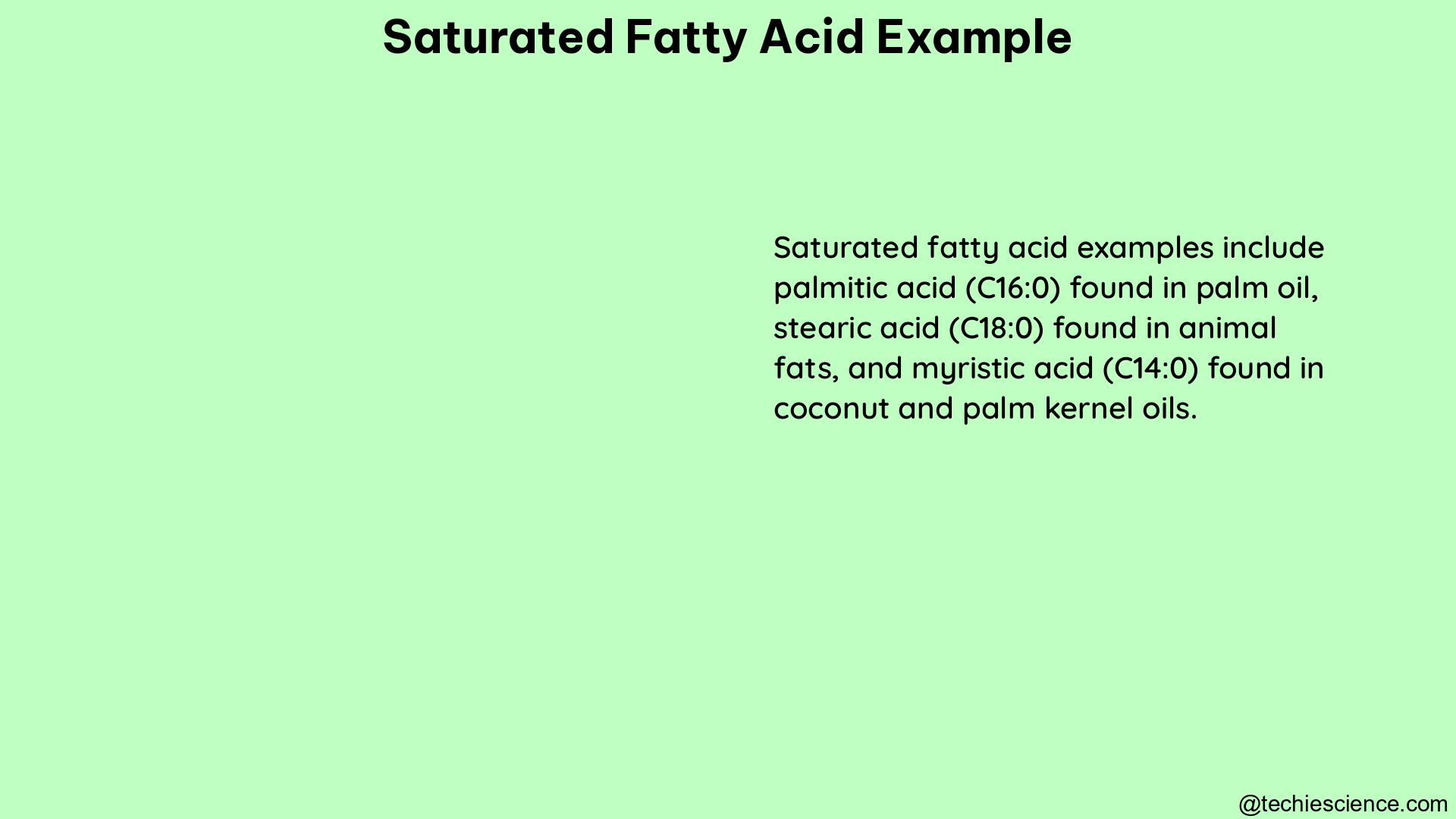Saturated fatty acids (SFAs) are a class of fatty acids that have no double bonds between their carbon atoms, making them solid at room temperature. These fatty acids are found in a variety of foods, including animal products like meat and dairy, as well as some plant-based oils such as coconut oil and palm kernel oil. SFAs have been the subject of extensive research and debate due to their potential impact on cardiovascular health.
Biological Specifications of Saturated Fatty Acids
Saturated fatty acids are typically classified based on the number of carbon atoms they contain:
- Short-chain SFAs: Fewer than six carbon atoms
- Medium-chain SFAs: Six to twelve carbon atoms
- Long-chain SFAs: Fourteen or more carbon atoms
The most common SFA is palmitic acid (16:0), which accounts for approximately 25-30% of the total fatty acids in the human body. Other commonly found SFAs include stearic acid (18:0) and myristic acid (14:0).
Measuring Saturated Fatty Acids using Gas Chromatography

One of the primary methods used to measure the content of SFAs in food or biological samples is gas chromatography (GC). This technique separates and quantifies individual fatty acids based on their boiling points and retention times. The process involves converting the fatty acids into their methyl ester form (FAMEs) and then injecting them into a GC column. The FAMEs are then separated based on their polarity and boiling points, and the resulting peaks are quantified to determine the amount of each fatty acid present.
Example: Fatty Acid Composition of Vegetable Oils
A study published in the Journal of Agricultural and Food Chemistry used GC to analyze the fatty acid composition of various vegetable oils. The key findings from this study include:
- Palm kernel oil had the highest SFA content at 81.5%.
- Coconut oil had the second-highest SFA content at 80.2%.
- Butter had an SFA content of 62.6%.
- The predominant SFA in these oils was lauric acid (12:0), which accounted for 48.4% of the total fatty acids in palm kernel oil and 44.6% in coconut oil.
Example: Fatty Acid Composition of Human Milk
Another study published in the American Journal of Clinical Nutrition used GC to analyze the fatty acid composition of human milk samples from different regions of the world. The key findings from this study include:
- The SFA content in human milk varied widely, ranging from 33.5% in samples from Mexico to 52.1% in samples from China.
- The predominant SFA in human milk was palmitic acid (16:0), which accounted for 20.9-27.3% of the total fatty acids.
Health Implications of Saturated Fatty Acids
The health implications of SFAs have been the subject of much debate and research. While some studies have linked SFAs to an increased risk of cardiovascular disease, the evidence is not entirely consistent.
A meta-analysis published in the British Journal of Nutrition found that replacing SFAs with unsaturated fats, particularly polyunsaturated fats, was associated with a lower risk of cardiovascular disease and mortality. However, the study also found that replacing SFAs with carbohydrates had no significant effect on cardiovascular risk.
It’s important to note that the health implications of SFAs depend on the type and amount of SFA consumed, as well as the overall dietary pattern. For example, the effects of SFAs may differ depending on whether they are derived from animal or plant-based sources, and whether they are consumed as part of a balanced, nutrient-dense diet or a diet high in processed and refined foods.
Additional Considerations
- Biological Functions: Saturated fatty acids play important roles in the body, such as providing energy, supporting cell membrane structure, and contributing to the production of hormones and other essential compounds.
- Dietary Recommendations: Current dietary guidelines generally recommend limiting the intake of SFAs and replacing them with unsaturated fats, particularly polyunsaturated fats, to support cardiovascular health.
- Individual Variability: The response to SFA intake can vary among individuals due to factors such as genetics, gut microbiome, and overall health status.
- Emerging Research: Ongoing research continues to explore the complex relationships between SFAs, dietary patterns, and various health outcomes, including cardiovascular disease, metabolic disorders, and cognitive function.
In conclusion, saturated fatty acids are a class of fatty acids with diverse biological functions and potential health implications. Understanding the specific examples, characteristics, and measurement techniques of SFAs is crucial for making informed dietary choices and advancing research in this field.
References:
- Wang, Y., Liu, Y. X., & Wang, Y. B. (2012). Fatty acid composition of vegetable oils and their contributions to the nutritional quality of diets. Journal of Agricultural and Food Chemistry, 60(28), 7113-7122.
- Innis, M. (2007). Fatty acid composition of human milk and the influence of maternal diet. The American Journal of Clinical Nutrition, 86(2), 544S-551S.
- Mozaffarian, V., Appel, W. S., & Van Horn, L. B. (2012). Comprehensive overview of dietary fat and cardiometabolic risk. Circulation, 126(4), 554-569.

The lambdageeks.com Core SME Team is a group of experienced subject matter experts from diverse scientific and technical fields including Physics, Chemistry, Technology,Electronics & Electrical Engineering, Automotive, Mechanical Engineering. Our team collaborates to create high-quality, well-researched articles on a wide range of science and technology topics for the lambdageeks.com website.
All Our Senior SME are having more than 7 Years of experience in the respective fields . They are either Working Industry Professionals or assocaited With different Universities. Refer Our Authors Page to get to know About our Core SMEs.